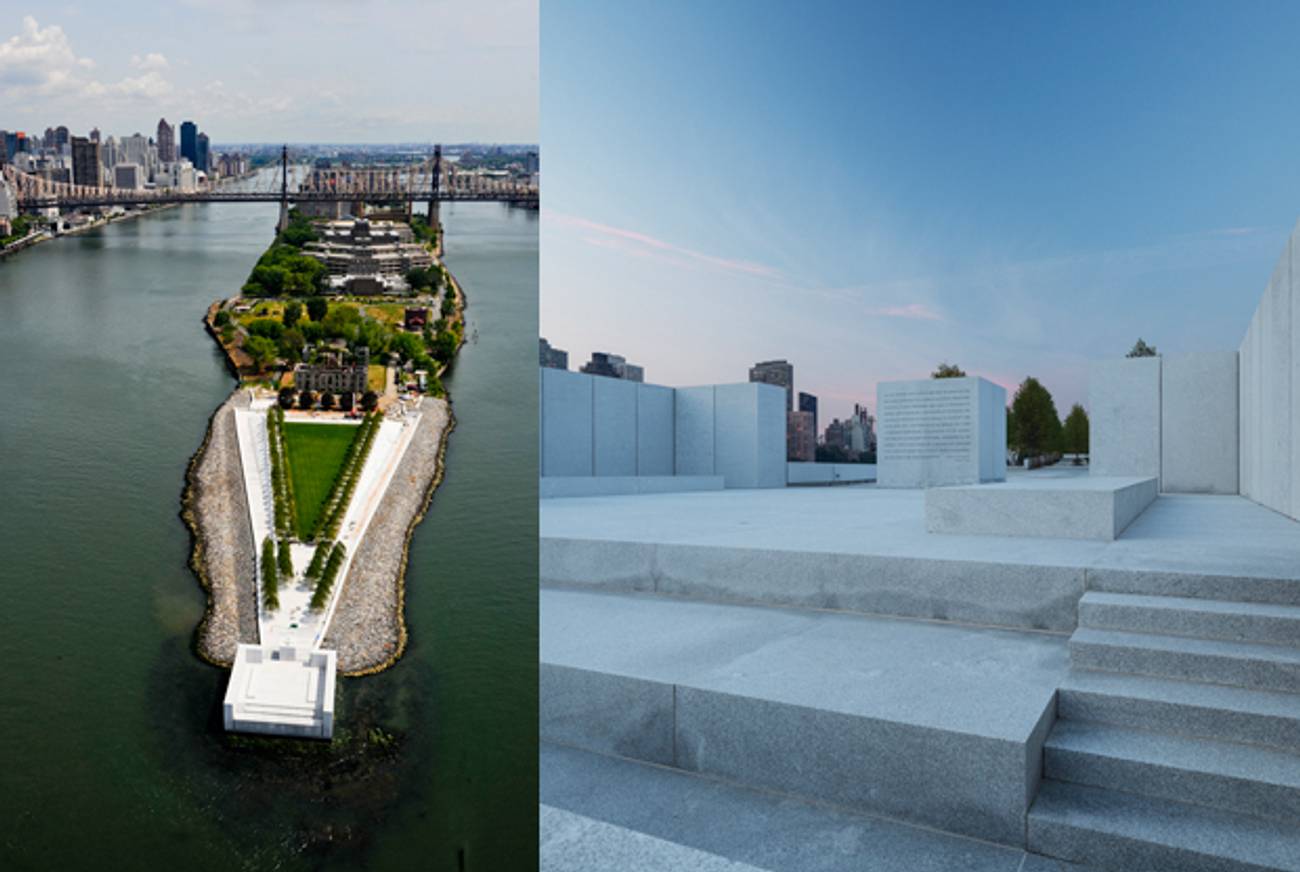Louis Kahn’s Timeless Vision for an FDR Memorial on Roosevelt Island in New York
The great architect’s park, designed in 1974, finds kinship with Roman and Egyptian ruins, with their silent, powerful massing




After 40 years of planning, fundraising, and construction, architect Louis Kahn’s last great commission, Franklin D. Roosevelt Four Freedoms Park, is finally accessible to visitors of New York’s Roosevelt Island. The park, which officially opens this week, is dedicated to Roosevelt’s 1941 inaugural speech on the four universal freedoms—of speech and worship, from fear and want.
It would be easy to take the opportunity to bemoan a 40-year lag for the project to be completed, like so many important works in New York City. But the truth is that the timing doesn’t matter. It proves that Kahn’s work can stand on its own, outside of time, eternal and significant. It’s difficult to imagine an architect in our time designing such a simple and reverent piece of architecture.
Born Itzel-Leib Schmuilowsky into a Jewish family in Kingisepp, Saaremaa, Estonia, on Feb. 20, 1904, Kahn later emigrated to Philadelphia with his parents at the age of 2. After he graduated from the University of Pennsylvania, his early professional career involved collaborations with several architects, including George Howe for the Philadelphia Housing Authority. But it was only after he established his own practice and visited the American Academy in Rome in the 1950s that his work began to take its distinct form.
Kahn, who died shortly after completing the drawings for the park in 1974, spent his career exploring architectural expression through strict and primitive geometric-forms as carefully placed solids and planned voids. Although thoroughly modern, his work managed to successfully reach far back into history without the burden of stylistic baggage while challenging modernist orthodoxies.
Kahn approached the design of the park with a relatively simple concept: a garden leading to an open-air room. The garden gathers the visitors along a V-shaped lawn flanked by a tree-lined approach, narrowing the visitors’ focus toward a space defined by massive, tightly spaced granite blocks. When one enters the room, the sight line opens up again with a stark view down the East River facing the Williamsburg Bridge and prominently featuring the United Nations building complex across the river. This view establishes a clear and important context for the monument dedicated to FDR, even as the two structures couldn’t seem more foreign to each other.
Remote, and in relative isolation from the city, the park also gives visitors a chance to experience Kahn’s work in its most welcome context, one without direct physical connection to other buildings. Although the site design for the park is simple and symmetrical, Kahn sited and sized the “rooms”—massive stone elements—with excruciating care and planning. Like the popular Manhattan Solstice, where the setting sun sweeps directly across the Manhattan Street grid, Kahn’s original design carefully aligned 1-inch gaps between the flanking stone elements to receive direct, low rays of sunlight. Along one side the gaps were aligned to coincide with the sunrise on the calendar date of FDR’s birth and another row to coincide upon the sunset of FDR’s death. In so doing, Kahn created a larger connection between the monument and its site and manages to bring the powerful and mute stones, if briefly, to life.
In Kahn’s own lifetime, he managed to be a modernist and a historicist. He was credited with invigorating the International Style by refocusing modern architecture on the clear and elemental expression of material, structure, and form. But it can easily be argued that his work found a far closer kinship with the Roman and Egyptian ruins that so strongly influenced him with their silent, powerful massing.
Today architecture is awash with loose formal expression, but one contemporary architect does hold a strong kinship to Kahn, the Swiss architect Peter Zumthor, whose work follows a similar path. By avoiding the same expressive traps of modern architecture and seeking a more profound expression of material and construction, Zumthor attempts to return to a more primary experience of architecture. This can best be seen in his Therme Vals (thermal baths) project in Graunbünden, Switzerland, completed in 1996. Intending to appear as a modern ruin and although more formally expressive, his architecture illustrates some important connections with Kahn’s Four Freedoms Park as well as his larger body of work. In substance however, what connects Zumthor with Kahn is their clear break from modernist orthodoxy by treating all materials with equal expressive power.
Kahn’s posthumously completed park reminds its visitors that universal principals in both modern architecture and democracy need not be based strictly on contemporary ideals, but rather on timeless principles that are as elemental and eternal in their appeal as Roosevelt’s Four Freedoms.
***
Like this article? Sign up for our Daily Digest to get Tablet Magazine’s new content in your inbox each morning.
Michael Tower is an architect and partner with the Brooklyn-based firm Studio Tractor Architecture.
Michael Tower is an architect and partner with the Brooklyn-based firm Studio Tractor Architecture.